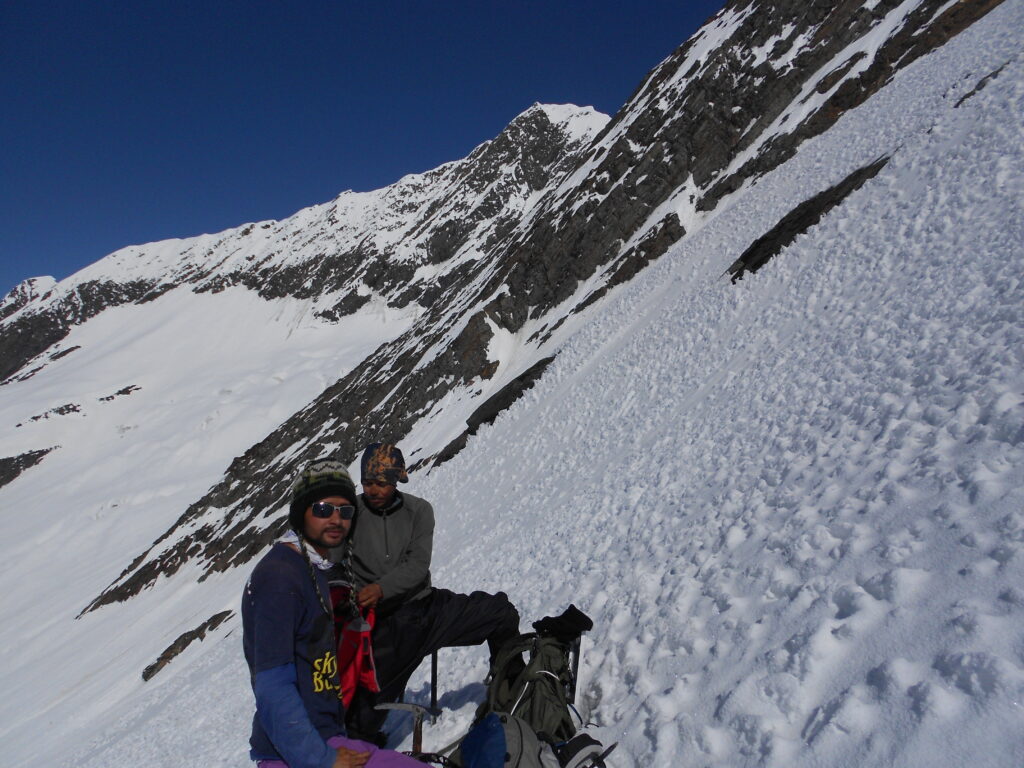Kang Yatse II
Kang Yatse II height is 6250 meters or 20,600 ft. & is one of the highest trekkable mountains in the Ladakh region of India.Kang Yatse 2 peak is located in Hemis National Park, near Stok village which is around 15 km southwest of the city of Leh, the capital of Ladakh.
Kang Yatse stands apart distinctively from its other surrounding peaks in the Markha Valley.
Season: Monsoon | Autumn |
Month: June End IJuly | August | September | October | November |
Country : India
Altitude: 6250 metes
Grade: Difficult
Location: Ladakh
Distance: 76 Km
Itinerary:-
Day 1 :Arrival Leh (3500 m) .
Rest and In Afternoon acllimatisation walk.Meet the trekking team in the evening for a briefing session on trek preparation and planning.
Day 2: Drive from Leh to Chilling and trek to Skiu (3500m)
After breakfast start drive which will take 2-3 hours,60 kms which is characterized by barren landscapes, high mountain passes, and snow-capped peaks
Start trek of about 4-5 hours of trekking, you will reach the village of Skiu, which is situated on the banks of the Markha River. Skiu is a beautiful village with traditional Ladakhi houses and a small gompa (Buddhist monastery). The campsite for the night is located just outside the village, on the banks of the river
Day 3:Trek from Skiu to Markha Village (3,710M)
Markha Village stands upwards consist of 40 households, is the largest village in the valley. Today is the longest day f trekking with 18Kms of hike. We reach the campsite after approx 6-7 hours of trek.Overnight in Camps.
Day 4: Trek from Markha village to Thochungtse (4200 m)
Post breakfast trek via Hankar village it will take 6 hours to reach campsite.The camp site is a popular place to spot herds of blue sheep slide up and down the steep cliffs with incredible agility.
Day 5: Trek from Thochungtse to Kang Yatse Base Camp (5100 m)
The Trek today will take 3 hours to reach base camp
Day 6:Rest and Training Day
We will acclimatise and drill with our Equipments to get in flow of climbing.
Day 7: Summit to Kang Yatse (6250) and back to Base Camp
Today we start very early in morning 1 am towards the top you will come accross scree and moraine and then walk up in snow for 6-7 hours untill you reach the top of the peak.The view is magnificent,you can see zanskar and Karakoram ranges far and flung.By evening return to base camp .
Day 8: Trek from Base Camp to Chogdo via Kongmaru La (5130m) and drive back to Leh.
We proceed from base camp to the grounds of Nimaling. From there it is a gradual ascent to Kongmaru La pass at 5260m with prayer flags fluttering. Beautiful views all round from the pass. We descend steeply at first before it becomes gradually as we reach the stream. A little ahead from there is Chokdo with chortens and a small shop. We walk a little further down and get into vehicles to drive to Leh.
Expedition Ends.
Inclusions:-
Transportation Leh -Chilling,Chokdo-Leh.
All meals during expedition.
In leh Hotel on MAP basis.
First Aid:Medical kit, Stretcher, Oxygen cylinder, Blood pressure monitor, Oximeter, Stethoscope.
Sleeping bag, Sleeping liners (if required), Mattress, Utensils.
3 men all season trekker tent,Toilet tents.
Camping stool, Walkie talkie.
Ropes, Helmet, Ice axe, Harness, Gaiters & Crampon (if required)
Mules/porters to carry the central luggage.
facility at the base camp for keeping additional luggage.
All necessary permits and entry fees, Upto the amount charged for Indian.
Services from Leh to Leh.
Exclusions:-
Insurance (Mandatory).
Any kind of personal expenses.
Leh permit to visit specific areas.
Mule or porter to carry personal luggage.
Emergency evacuation, hospitalization charge or etc.
Anything not specifically mentioned under the head Inclusion.
Environment fee : Approx Rs. 600 per person. (as per new Guidelines).
Things can be provided on demand and availability (participant has to pay extra for these things
Tourist Attractions:
Traditional Ladakhi village & culture, ancient monasteries, snow capped mountains in both Himalayan and Zanskar ranges, wild marmot and birds, incredible Himalayan scenery, beautiful campsites in villages & remote location.


